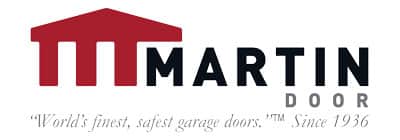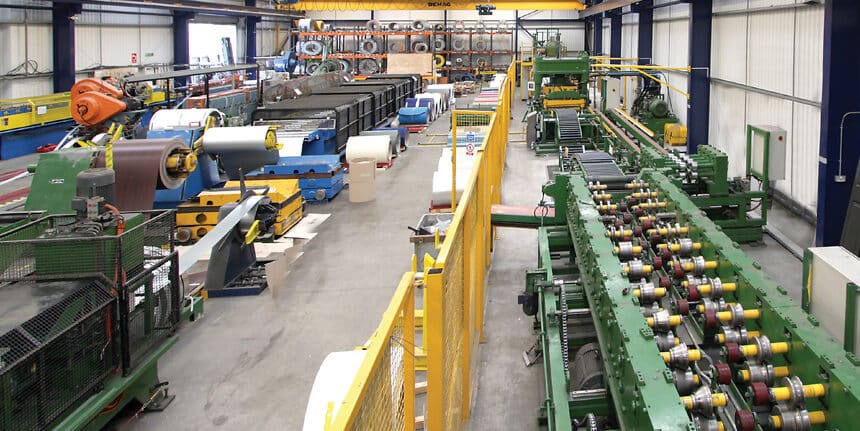Garage Door Brand Manufacturing Industry Overview:
The garage door manufacturing industry thrives on innovation and evolving consumer needs. “Garage Door Brands” actively deliver a wide range of products. The industry initially shifted from wood to modern materials like steel and aluminum. Manufacturers subsequently focused on durability, energy efficiency, and aesthetic appeal, incorporating advanced insulation and smart technology. Construction trends, economic fluctuations, and technological advancements shape the industry’s landscape. Major brands compete on quality, design, and customer service. Additionally they simultaneously navigate the complexities of material sourcing, panel formation, hardware assembly, and rigorous quality control. These efforts ultimately meet the diverse demands of both residential and commercial markets.
Material Procurement:
Garage door brands source raw materials, primarily steel and aluminum, from domestic and sometimes international suppliers. Moreover, they acquire insulation materials (polystyrene or polyurethane). They also source hardware components (springs, rollers, hinges, tracks) from specialized manufacturers. Manufacturers prioritize durable and reliable materials, ensuring their products withstand the elements and provide long-lasting performance. They carefully source steel and aluminum, as well as insulation and hardware components, from trusted suppliers.
Panel Formation:
- For Steel Garage Doors: Roll-forming machines shape steel coils into the desired panel profiles. Embossing or stamping processes create the surface texture and design. Finally, Manufacturers then clean and treat the steel to prevent rust.
- For Aluminum Garage Doors: Manufacturers cut and form aluminum extrusions into panel frames. They then install various infill materials such as glass or aluminum panels into the frame. The formation of garage door panels is a precise process tailored to the material used. Steel doors undergo roll-forming and stamping; aluminum doors utilize extruded frames with various infills. Each method ensures the panels are structurally sound and aesthetically pleasing.
Insulation (If Applicable):
For energy-efficient garage doors, manufacturers apply insulation. They carefully apply foam insulation, either polystyrene or polyurethane, to the panels. Also, they often inject polyurethane foam, which expands to fill the panel cavity and provides excellent insulation.
Painting and Finishing:
Manufacturers clean and prep panels for painting. Automated paint lines apply primer and topcoat finishes. They often use powder coating for durable and weather-resistant finishes. The painting and finishing process enhances both the appearance and durability of garage doors. Automated paint lines and powder coating techniques ensure a consistent and long-lasting finish.
Assembly and Hardware Installation:
Manufacturers assemble panels into complete door sections. They then attach hinges, rollers, and other hardware. They finally install weather stripping to create a tight seal. Assembly involves the precise joining of panels and the installation of hardware. This stage ensures that garage doors operate smoothly and reliably. Weather stripping creates a tight seal, preventing air and moisture infiltration.
Quality Control:
Manufacturers conduct thorough inspections of each garage door to ensure quality and functionality. They check measurements, finishes, and hardware installations. They also perform operational tests. Quality control is paramount in garage door manufacturing. Each door undergoes rigorous inspection to ensure it meets the highest standards.
Packaging and Shipping:
Manufacturers carefully package finished doors to prevent damage during transport. They subsequently ship doors to distributors, dealers, or directly to customers. To protect the finished product, manufacturers carefully package garage doors before shipping. This ensures that they arrive at their destination in pristine condition, ready for installation.
Company-Specific Practices:
- C.H.I. Overhead Doors: C.H.I. Overhead Doors focuses on a wide range of residential and commercial doors, with a strong emphasis on steel construction. They utilize advanced roll-forming technology and automated paint lines. They maintain a large network of dealers across the United States. They offer a very large selection of door styles and colors. Therefore, C.H.I. Overhead Doors is known for its extensive selection and efficient manufacturing processes, focusing on steel doors and leveraging advanced technology.
- Martin Garage Doors: Martin Garage Doors emphasizes customization and high-quality materials, offering a premium product with a focus on detail, safety, and durability. Martin Garage Doors is known for its high-quality steel and aluminum doors, with a focus on custom designs and premium features. They offer a wide range of customization options, including unique panel designs, window configurations, and color choices. They are known for their high quality aluminum full view doors. They pay close attention to detail and craftsmanship. They focus on safety and durability.
Key Trends in U.S. Garage Door Brands Manufacturing:
The garage door industry is evolving to meet modern demands. Key trends include increased customization, a focus on energy efficiency, the integration of smart technology, a push for durability and low maintenance, and enhanced safety features.
Conclusion:
U.S. garage door brands produce high-quality, reliable, and aesthetically pleasing products that meet the diverse needs of homeowners and businesses.
Watch a video by C.H.I. Overhead door on their manufacturing process:

Watch Martin Garage Doors Manufacturing process video:

